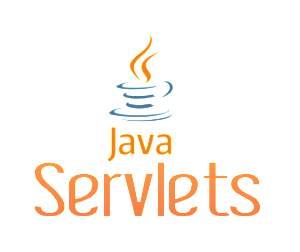 1.What are Servlets?
1.What are Servlets?
Java Servlets are programs that run on a Web or Application server and act as a middle layer between a request coming from a Web browser or other HTTP client and databases or applications on the HTTP server.
2.What are the advantages of servlets over CGI?
Servlets offer several advantages in comparison with the CGI.
Performance is significantly better.
Servlets execute within the address space of a Web server. It is not necessary to create a separate process to handle each client request.
Servlets are platform-independent because they are written in Java.
Java security manager on the server enforces a set of restrictions to protect the resources on a server machine. So servlets are trusted.
The full functionality of the Java class libraries is available to a servlet. It can communicate with applets, databases, or other software via the sockets and RMI mechanisms that you have seen already.
3.What are the major tasks of servlets?
Servlets perform the following major tasks:
Read the explicit data sent by the clients (browsers). This includes an HTML form on a Web page or it could also come from an applet or a custom HTTP client program.
Read the implicit HTTP request data sent by the clients (browsers). This includes cookies, media types and compression schemes the browser understands, and so forth.
Process the data and generate the results. This process may require talking to a database, executing an RMI or CORBA call, invoking a Web service, or computing the response directly.
Send the explicit data (i.e., the document) to the clients (browsers). This document can be sent in a variety of formats, including text (HTML or XML), binary (GIF images), Excel, etc.
Send the implicit HTTP response to the clients (browsers). This includes telling the browsers or other clients what type of document is being returned (e.g., HTML), setting cookies and caching parameters, and other such tasks.
4.Explain servlet life cycle.
A servlet life cycle can be defined as the entire process from its creation till the destruction. The following are the paths followed by a servlet.
The servlet is initialized by calling the init () method.
The servlet calls service() method to process a client’s request.
The servlet is terminated by calling the destroy() method.
Finally, servlet is garbage collected by the garbage collector of the JVM.
5.When init() method of servlet gets called?
The init method is designed to be called only once. It is called when the servlet is first created, and not called again for each user request. So, it is used for one-time initializations, just as with the init method of applets.
6.When service() method of servlet gets called?
Each time the server receives a request for a servlet, the server spawns a new thread and calls service. The service() method checks the HTTP request type (GET, POST, PUT, DELETE, etc.) and calls doGet, doPost, doPut, doDelete, etc. methods as appropriate.
7.When doGet() method of servlet to be called?
A GET request results from a normal request for a URL or from an HTML form that has no METHOD specified and it should be handled by doGet() method.
8.When doPost() method of servlet to be called?
A POST request results from an HTML form that specifically lists POST as the METHOD and it should be handled by doPost() method.
9.When destroy() method of servlet gets called?
The destroy() method is called only once at the end of the life cycle of a servlet.
10.For what purpose init() method of a servlet is used?
The init() method simply creates or loads some data that will be used throughout the life of the servlet.